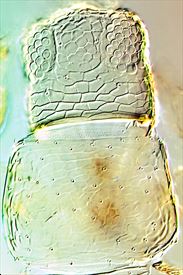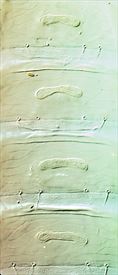Distinguishing features
Both sexes wingless. Body, legs and antennal segments I–II yellow, III–V yellow with pale brown shadings, VI variably yellow at base, VII–IX brown. Head reticulate, weakly so in ocellar region; eyes with no facets pigmented or only weakly indicated; ocellar setae III variable in position. Antennae 9-segmented; sense cone simple on III, forked on IV; IV–VI pedicellate. Pronotum almost without sculpture; with no long setae. Mesonotum and metascutum transverse, campaniform sensilla present. Abdominal tergites transversely reticulate medially, postero-lateral margins smooth; II–VII with all four pairs of setae equally small; VIII with narrow, irregularly lobed, craspedum; spiracles occupying almost half of lateral margins of VIII.
Male similar to female; tergite IX with 2 pairs of short stout setae medially; sternites III–VII with weakly C-shaped or curved pore plate.
Related species
Out of a total of 81 species of Anaphothrips worldwide, 43 are known from Australia (Mound & Masumoto, 2009) and five from New Zealand. Many of these species have the antennae clearly 9-segmented, others clearly have only 8 segments, but several species have an intermediate condition with segment VI bearing a partial and often oblique transverse suture. The significance of this grass-living species remains in doubt, and it is possibly merely the apterous form of A. varii.
Biological data
Feeding on the leaves of unidentified grasses (Poaceae).
Distribution data
Known only from Southeastern Australia and New Zealand (TK / NN, MB, BR, MC, WD, OL, CO, FD). Recorded from November to March.
Family name
THRIPIDAE, THRIPINAE
Species name
Anaphothrips woodi Pitkin
Original name and synonyms
Anaphothrips woodi Pitkin, 1978: 367.
References
Mound LA & Masumoto M (2009) Australian Thripinae of the Anaphothrips genus-group (Thysanoptera), with three new genera and thirty-three new species. Zootaxa 2042: 1–76.




